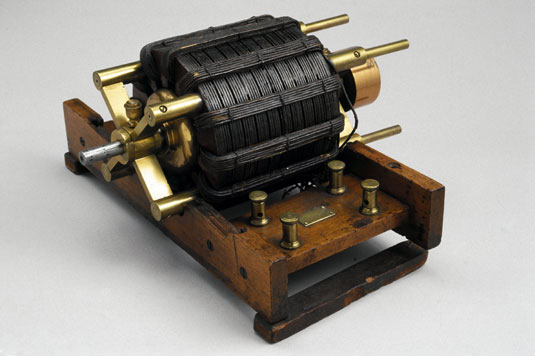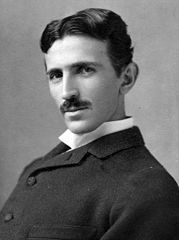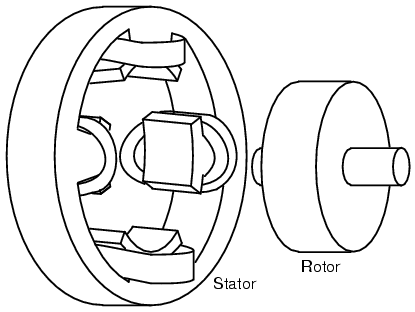Tesla's AC Motor
In 1887, Nikola Tesla, a young Serbian inventor living in Manhattan, filed for seven U.S. patents which described a complete AC power system, at the heart of which was his new invention: the polyphase induction motor. In Tesla's first design of the motor, the stator (see below) has wrapped around it two pairs of coiled wire. One pair is at the north and south positions, while the other pair is at the east and west positions, and this is the arrangment of a two-phase motor. The currents going to one pair of windings are 90º out of phase with the currents going into other pair of windings, which causes the stator to generate a rotating magnetic field. This rotating magnetic field induces an alternating current in the rotor which in turn generates a magnetic field. The magnetic field of the rotor attempts to align with the rotating magnetic field of the stator, and this causes the rotar to rotate.
In 1888 Tesla sold the manufacturing rights to his power system to Westinghouse for $65,000 and went to work as an employee of the Westinghouse Electric Company. Improving upon his original design, Tesla, along with other engineerts working for Westinghouse, the three-phase induction motor was created. This motor operates upon the same principles as the two-phase, except the stator has three coils of wire around it, each oriented 120 degrees apart from the others and each with currents 120 degrees out of phase with the others. This design would prove to be just what AC power needed to take off, and it is still the motor of choice for power generation today.


Original Tesla Induction Motor Nikola Tesla
Main Parts of Tesla's Polyphase Induction Motor
